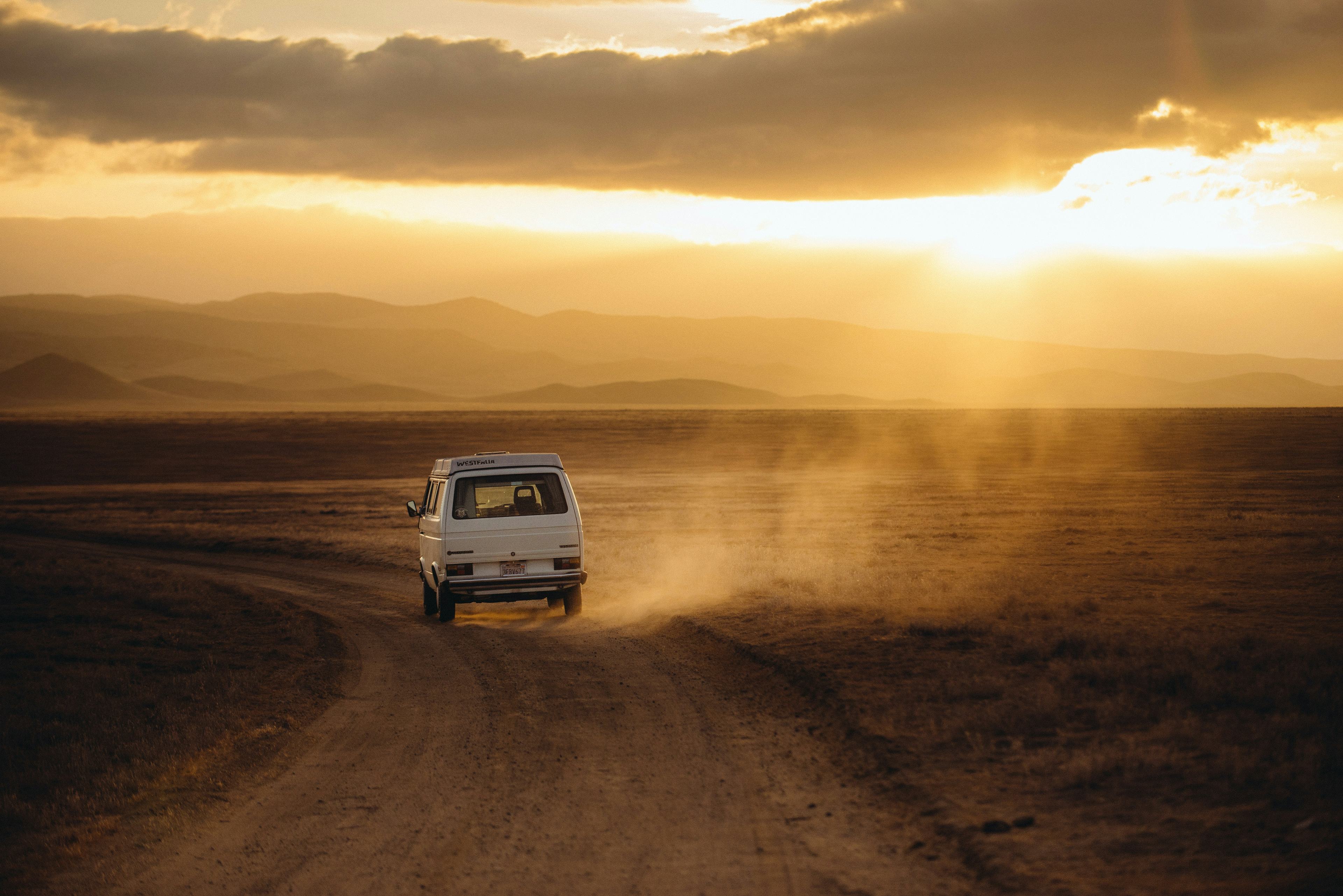
Endless plains on the road in Northern SD.
Wisconsin native Erinn Springer and Turkish-born Sabiha Çimen set out to explore the Dakotas, looking to discover heartland vistas and deep community. Together, the two photographers learned how their ways of seeing the world fit together in an epic American landscape.



Plain Truth
An Essay by Eliza Blue
Back in my wayward youth, when I was a full-time touring musician, I spent more than my fair share of nights sleeping on couches and floors or camped out in the back of my Subaru station wagon. I had two dogs that usually toured with me, so I was never alone and rarely felt lonely. Sometimes I had an apartment to go home to when the tour ended, sometimes I didn’t. It suited me. I liked traveling light, I liked the feeling of the open road, and there were very few places I landed that didn’t feel friendly.
Then, 15 years ago, I abruptly moved to the short-grass prairie of western South Dakota. It was supposed to be a temporary adventure. Instead, I found myself in a relationship with the land, the wind, the animals, and I knew there was no going back to my former nomadic life.




And that’s how I ended up living and working on a ranch in Perkins County, one of the most remote counties in the contiguous United States, where cattle outnumber humans twenty-five to one, our population density is less than one person per square mile, and folks wear their cowboy hats unironically. Once we leave our yard and its scattered compound of outbuildings, there is nothing but grass, soil, and sky bisected by barbed wire, nothing more of human construction than my silhouette placed against the gradual curving of the earth’s skin, nothing to hear but the scattered call of the meadowlark and the wind ringing in my ears.
Forty-five miles north is the nearest “big” town, population 1,283. At night, we can see the glow of its lights from the high ridge in our largest pasture, but it is invisible during the day. That’s the closest place to find a proper grocery store, and if you need more than the most basic supplies, you’ll end up driving a lot farther.
Almost everything, even visiting a neighbor, requires a road trip when you live on this part of the prairie. This has become the reality of my life. But its exceptional quality—the simple fact that those of us who live here, and those who visit us, need to travel this land by road, often over formidable distance—hit home when I saw the remarkable photographs of Erinn Springer and Sabiha Çimen, documenting their own exploration of the region known as “the Dakotas.”
In very early Christianity—we’re talking 300 AD or so—Christian mystics began moving out into the desert. City people would pilgrimage to them hoping for insights and healing. Apparently that was the precursor to organized monastic life–the recognition that apart from the “madding crowd” humans could become holy. I think modern people do this, too, but they don’t usually come here. We are too far from the interstate.


Recently, I had to fly out of the tiny, parking lot airport in Dickinson, North Dakota, which is two hours north of my home. I ended up driving some of the same country roads Erinn and Sabiha traveled while creating this photo essay. The drive to the airport took longer than the actual flight, but the miles of gray highway flew by as effortlessly as ribbons carried by the wind. It was late afternoon, the grass beside the road burnished gold and the sky was making her soft kaleidoscope into twilight. Cresting a tall hill, the landscape rippling before me, it looked to my eyes—eyes that grew up surveying textbooks and computer screens instead of long, open views—like a lifesize map of the canyon that slopes to the river.
I thought of Erinn and Sabiha seeing these roads for the first time. It wasn’t hard to imagine how they must have felt. Even after a decade and a half of making drives like this, I still feel caught between discomfort and awe. The land is so vast and unknowable, and I am so small. It’s the feeling of being a permanent newcomer, an odd paradox that somehow suits me. I think when I was younger I was trying to outrun myself. But now, threading my way across the open prairie, I find an unexpected stillness. I am reminded that I too am vast and unknowable. There is nothing to outrun anymore, because the running has transformed into its own kind of arrival. I am the pilgrimage. And my goodness, if that doesn’t feel a little holy.
























